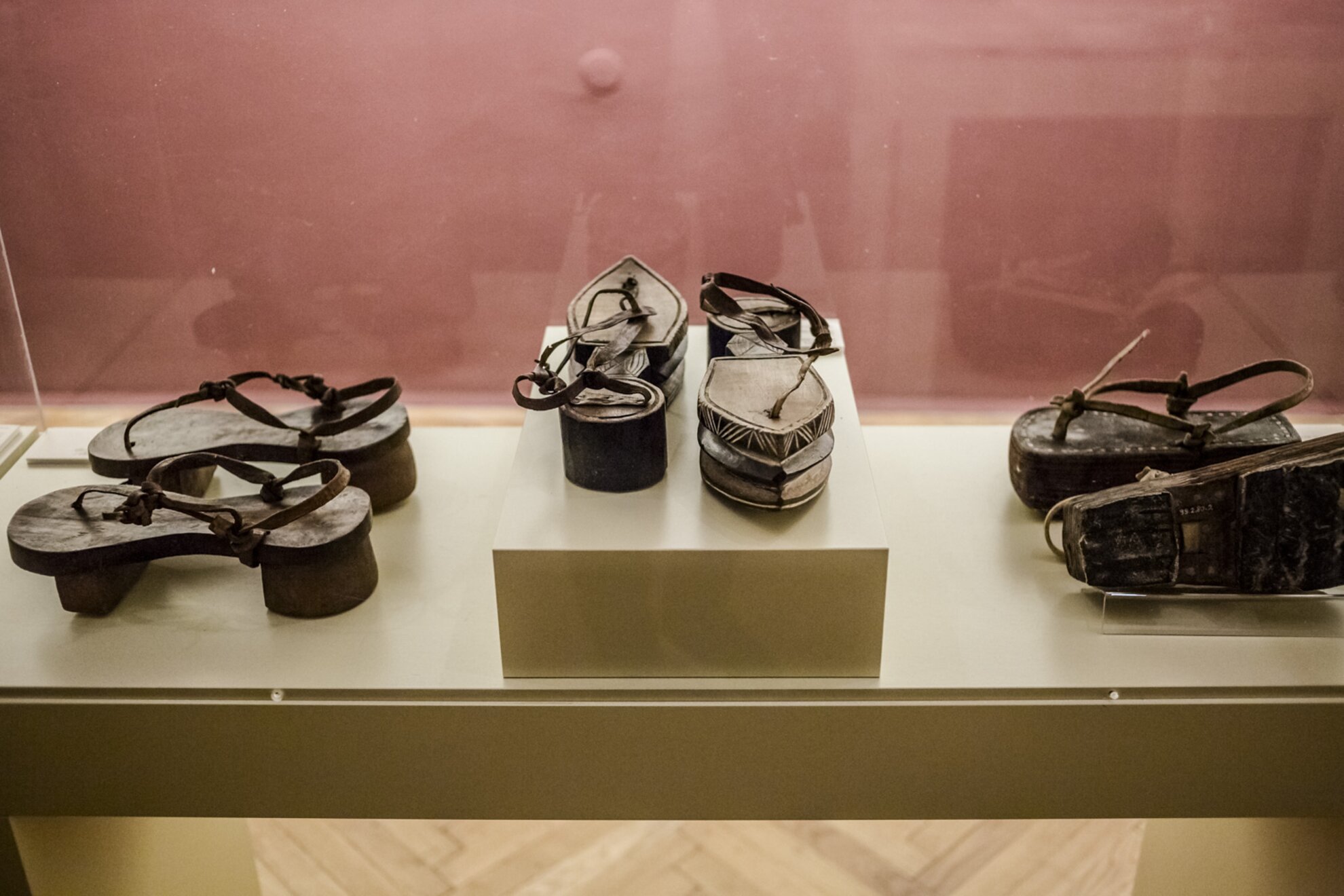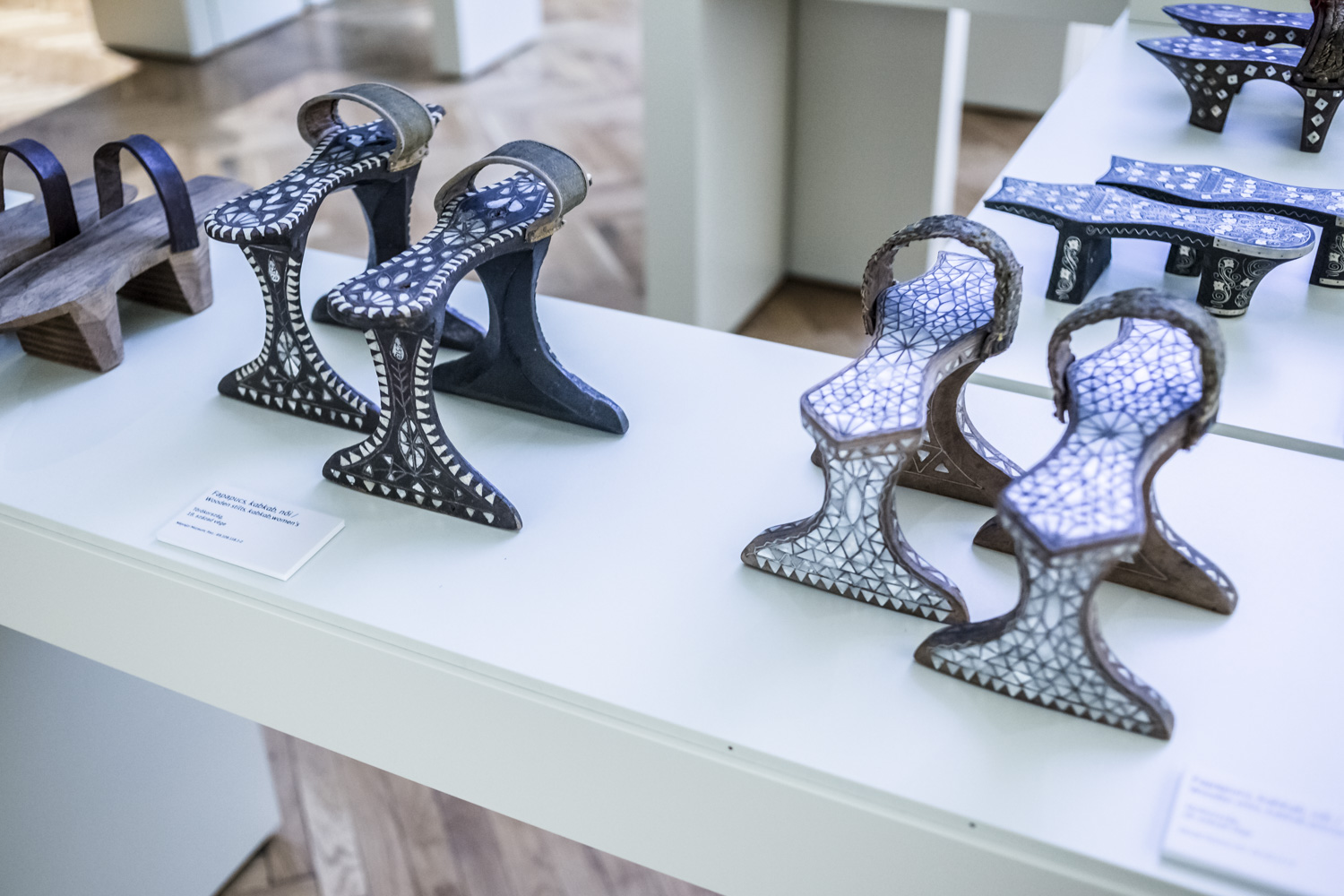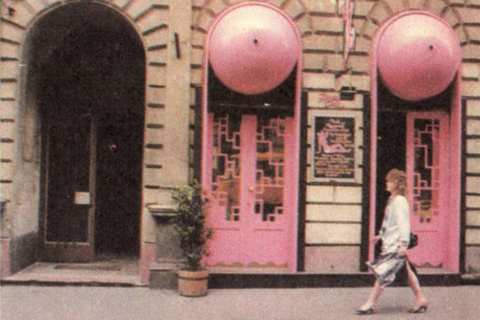Now there’s one more reason to visit the Museum of Ethnography on Budapest’s Kossuth Square – the stately exhibition space is home to a fascinating collection of traditional footwear from around the world, a display that includes unique pieces from centuries ago, like boots made of fish skin, slippers created using bark, or miniature pairs of surreal shoes that were designed for donning them on crippled lotus feet, according to an ancient Chinese tradition. This spectacular temporary showcase is one of the final exhibitions for this building, before the museum moves to a new location.
Spread across 800 square meters and multiple exhibition halls, visitors to Budapest’s Museum of Ethnography can immerse in a huge collection of shoes from the 19th and 20th centuries from nations around the world, which covered and protected the feet of countless people before the fast-fashion era and the modern days of shopping malls. Centuries ago (and still today), in certain parts of the planet, there were no shoe shops to walk into for a quick and convenient footwear purchase, and it was not uncommon for people to cope with life’s various challenges barefoot, like working the fields no matter what the weather brings. To demonstrate the barefoot phenomenon, an entire section is dedicated to this topic within the museum’s current “Bocskor, Boot, Paduka – Adventures in Footwear” exhibition (a name referring to the fur-lined leather moccasin-style Bocskor from Montenegro, Transylvania’s embroidered boots, and Indian knobbed wooden paduka sandals), however – quite understandably – there are no shoes on view around this specific part of the display.

Nonetheless, when we proceed to the next exhibition hall, a vast collection of intriguing footwear unfolds before our eyes, all organized according to what climatic conditions they were used in, and the display includes several smart solutions from the northern and southern hemispheres. Around the Arctic Circle, including in Greenland and in northwest of Siberia, fur, sealskin, and reindeer skin were the primary materials used for making shoes, while just over a decade ago women from the Nenets ethnic group – the indigenous nomadic people of Siberia – were still actively making slippers using reindeer fur. However, one of the greatest challenges across this territory was to survive the extreme cold, so when the temperature dropped far below freezing, inhabitants at the northern parts of the globe used to wear reindeer-fur stockings inside-out under their boots, so the fur’s rubbing effect on the skin caused hyperemia that prevented the limbs from freezing. Finally, calks were attached to the sole of the boots to prevent slipping on the icy ground, while residents of Mongolia oftentimes donned boots with a fur-made sole. The display of this hall is complete with dog shoes that – instead of serving as trendy outfit for pets – were used to protect the animals’ legs from injuries on the frozen terrain.

What awaits in the next room is in striking contrast with these bulky outfits – a summery collection presents footwear from the planet’s southern areas, with numerous stands showcasing lighter shoes made of materials that were ubiquitous across the warmer lands, like bark, rice straw, wood, or more lately car tires – during our guided tour in the museum, we learned from the exhibition’s curator that bark was applied on the feet as soon as it was peeled off the tree, so due to its moisture content it made a perfect fit.
From this point, the exhibition proceeds to other thematically organized footwear displays, like shoes worn while doing various work, while around the house, or during celebrations and on special occasions. Navigating this vast collection can seem a little challenging, however there are plenty of bilingual Hungarian- and English-language descriptions that provide in-depth explanations of the displayed pieces, including several intriguing cultural and ethnographic facts: for example, we learned that the Argentines pulled the skin off from horses’ legs to use this living material for preparing riding boots. The wearable relics include Hungarian clogs, felt boots (where we halted for a moment wondering how one could even walk with them), and a pair of baize-like clumsy monster boots from Nyíregyháza – a city in the Hungarian countryside – indicating that in the 1950s and ’60s, women doing manual labor were not exactly pampered with fashionable shoes.

By the time we were halfway through the exhibition, we thought that nothing could blow our mind more than the Russian fish-skin boots or the reed-basket-lookalike footwear used by people while cutting cane, but then our tour reached its peak point as we stepped in front of a lofty wooden wonder, a couple pairs of inelastic slippers used by wealthy Muslim women inside the bathhouses. This rigid footgear completed the affluent ladies’ ornate outfits, but from time to time, the high-class stroll might very well ended in a fall on the floor. However, we would have rather picked this elevated gear for our ramblings than the tiny lotus shoes designed for brutally crippled miniature Chinese feet, according to the nation’s ancient traditions that were in practice for centuries. This bizarre custom was a common practice first among Chinese aristocrats, before the trend infiltrated to the villages in the 19th century, although members of the lower classes had no choice other than doing physical work on their deformed feet.

Wandering amid the exhibition’s festive footwear section, we see numerous pairs of elaborate shoes that aimed to represent diverse symbols, including social and marital status, age, or even a women’s “unclean” period during their menstruation and pregnancy, when they were banned from wearing their embellished footgear. Nonetheless, ladies who belonged to the Berber ethnic group followed a loveable tradition and said “I do” by trying on the shoes they got as a wedding gift from their fiancé, while in Eritrea plastic sandals worn by the army in their fight to attain an independent country became a national symbol, and now in Asmara – the capital city of Eritrea – an oversized sandal-shaped statue commemorates this freedom fight.Those who are looking for the display’s most bizarre pair of footwear will certainly find the so-called vendetta shoes particularly disturbing: within the indigenous Australians’ barefoot culture, when a family member's death was surrounded by the suspicion of a hex, relatives oftentimes went on a quest to take blood revenge while wearing a special pair of shoes that was made of human hair, feathers, and blood – footwear that enabled them to walk without leaving bare footprints.
Before we bid farewell to this moving display, a video installation – filmed in Budapest’s Deák Square underpass – takes us back to our present time by zooming on the feet of passersby to display the variety of modern-day footgear, including mass-produced sneakers and ordinary winter boots.All of the shoes and boots presented at this exhibition are well preserved, and looking at these uniquely ornate pieces, we feel the desire to head directly to a local shoemaker to order a pair of custom-made footwear. However, buying handcrafted shoes is now considered a luxurious activity, and this once-common service has become scarce even in Hungary’s capital, with just a few high-quality masters nurturing this profession, including the professional shoemakers found along downtown’s Haris köz in District V. The Museum of Ethnography decided to implement this long-planned exhibition at an appropriate time, as shoes also represent the symbol of embarking on a new journey, which the museum is now facing in the upcoming years as they close down at the end of this year at their current location to move into a new building in Budapest’s City Park.

The “Bocskor, Boot, Paduka – Adventures in Footwear” exhibition is on view until November 30th.




